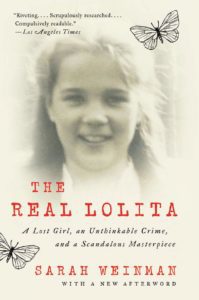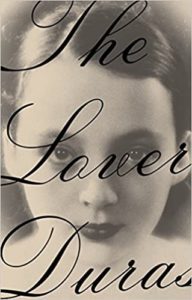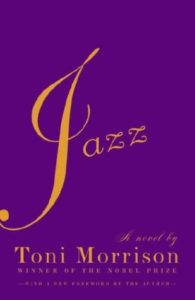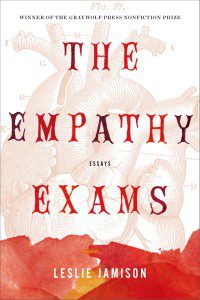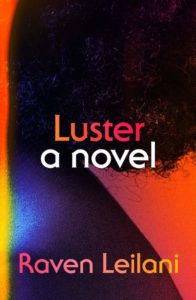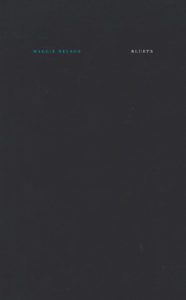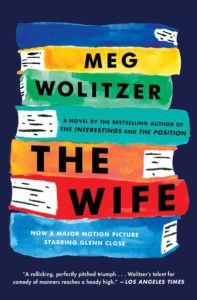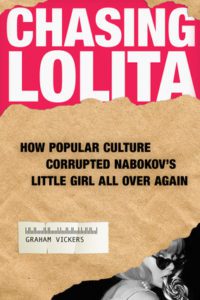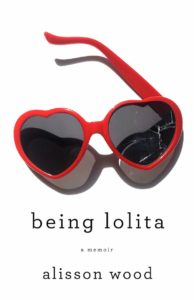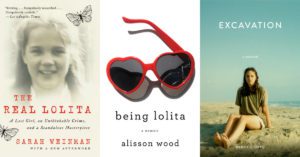
So, you’re finally going to read Lolita. Great! But, maybe read some of these other books first?
There are many reasons to read Lolita. If you’re in or have been in any kind of English or creative writing program within academia, you’ll hear lots of (cough, mostly white male, cough) voices insisting you must read it. Okay. Sure. It is a beautiful book. The opening chapter is a stunner, a champion of language flexing his literary muscles on the page. The heart of the novel is established in just one page: the beatings of obsession, lust, an illicit affair, secrets.
But Lolita is also a horrifying book, a story about a predator who kidnaps and repeatedly rapes a young girl, told from the predator’s point of view, positioned as (as stated by Vanity Fair, in its original review of the book,) as “the most convincing love story of our century.” I don’t believe Lolita is about love; Lolita is about manipulation, obsession, and trauma. I reject the worship of Nabokov as “the artist genius,” a belief that excludes the work of so many talented writers—in particular, women writers, queer writers, and writers of color.
The books I’ve selected below thrum on these same Lolita notes—books with similar narratives, my favorite works by writers who are artistic geniuses in their own right, and interrogatory academic texts focused on Lolita. I believe reading is an important way to crack open stereotypes, dismantle damaging social constructions, and reconsider rigid gender roles—all of which seep into Lolita (along with much of our Western canon).
Yes, read Lolita. But please make room to read these wonderful books, too.
***
The Real Lolita: The Kidnapping of Sally Horner and the Novel That Scandalized the World by Sarah Weinman
Weinman took on a cause few knew existed: the story of Sally Horner, an eleven year old girl who was kidnapped in 1948. Never heard of her? That’s because we are more familiar with her fictionalized character of Dolores Haze, Lolita herself. Nabokov makes multiple allusions in his novel to the sensational crime (one such “Easter Egg” is found in Part Two, Chapter 33: “Had I done to Dolly, perhaps, what Frank Lasalle, a fifty-year-old mechanic, had done to eleven-year-old Sally Horner in 1948?”), but the outside world forgot about the real-life victim. Weinman’s background in true crime writing gives her the craft needed to tell Sally’s story, and her empathy and care toward Sally takes care of the rest; this book is a must-read if you have even the slightest interest in Nabokov’s novel. As Weinman writes, “Sally Horner can’t be cast aside so easily.”
Excavation by Wendy Ortiz
This stark, brutal memoir by writer Wendy Ortiz follows her experience being groomed and abused by a teacher in her middle school over five years, and upends readers’ expectations of a victim through graceful and evocative prose. Ortiz leads the reader through those years of her life with alternating tenderness and painful truth-telling. One of the most impactful sections, for me, came in the middle of the book: “Notes on an Excavation: Why I Didn’t Tell” is a two-page list of reasons young Wendy kept the relationship a secret, ranging from “I didn’t want to be average” to “It’s like walking around a live mine. Say the wrong thing, move the wrong way, there could be casualties.” This was the first book that made me feel seen in my own experience, and I recommend it with my whole heart.
The Lover by Marguerite Duras
The Lover tells story similar to Lolita—an illicit affair between a teen girl and adult man—but through the eyes of the woman the girl became, a woman who now understands what happened to her with clarity. The final word of the opening paragraph, “ravaged,” is the center of the tornado that is the novel. It is stunning, dangerous, overwhelming, and grabs the reader’s hand tight on that first page and then never lets go. The first time I read this book, I felt my heart beating the entire time. As Duras wrote, this tiny book is “an image of intolerable splendor.”
Jazz by Toni Morrison
If you’re considering picking up Nabokov’s Lolita for the promise of beautiful, swelling language, I turn you, instead, to my favorite Toni Morrison novel. Morrison is the most powerful writer of our era, and Jazz is not only a poltergeist of a story (a revenge plot told by a ghostly voice—the book itself?—set in 1920s Harlem), but leaves you in physical and emotional disarray. This is an example of literary craft at the highest octave, and Morrison creates a lush world and complex, haunting characters who sing in every sentence. Unlike Nabokov, Morrison also understood the vital work of editors in the art of storytelling (she was the first Black woman editor at Random House), and so the text never collapses under its own writerly weight.
The Empathy Exams: Essays by Leslie Jamison
While there are many things Nabokov accomplishes in Lolita, I don’t think generating empathy for Dolores Haze is one of them. And, while it could be argued that readers empathize with Humbert Humbert, as he is a pedophile and it is entirely manipulation I do not acknowledge this as true empathy. But Jamison’s The Empathy Exams is a tour de force in how to create empathy, connecting the reader to the pain of others, to the pain of art, to the pain of our own selves. The title essay captures Jamison’s time as a medical actor, pretending to be sick as practice for medical students, and places the case descriptions next to her own impulses to identify pain, her pain, both physical and interior. The final essay, “The Grand Unified Theory of Female Pain” creates a cacophony of literary, pop culture, art, and music that dissects pain as “wounded women” and demonstrates how that, too, is a creation, even if our pain is not. This collection of essays is extraordinary and exacting.
Luster by Raven Leilani
If it’s a novel about an illicit, dark affair you are after, then Luster by Raven Leilani is for you! Poignant, funny, tumultuous, and bursting with provocative and strikingly gorgeous prose, Luster tells the story of Edie, a young Black woman in search of herself and her art in New York City, and how that journey brings her into a man’s open marriage, and to an unexpected connection with his daughter. One of my favorite moments in Luster is about Edie’s fascination with the painting Judith Slaying Holofernes by Artemesia Gentileshi:
In it, two women are decapitating a man… When Gentileschi painted it, she was seventeen. She painted it after her mentor, Agostino Tassi, was convicted for her rape. As I am working on a piece inspired by this painting, my father dies. I bury him next to my mother, and for weeks I don’t sleep and the mice eat all my fruit.
In half a paragraph, Leilani deftly reveals a deep interiority and the very artist’s eye of Edie, and gestures toward our society’s tolerance and perpetuation of violence against women and toward the very center of art, effortlessly painting in our minds a classic still life of a bowl of fruit now nibbled by vermin. Praised by Zadie Smith and already selected for the Center for Fiction’s First Novel Prize long-list, this book is nothing we’d expect and more than we deserve.
Trust Exercise by Susan Choi
Lolita, at its core, is a book about trust—the reader trusting the narrator, Dolores trusting Humbert—and how that trust is warped and shattered. It is also a book about who tells the story, and storytelling itself. Trust Exercise explores these same fertile grounds, set in a high school with student drama (both on and off the stage) and a manipulative teacher. Winner of the National Book Critics Circle award, Trust Exercise is a deliberate, carefully crafted story about the power of unreliable narrators and the complicated space of adolescence.
Bluets by Maggie Nelson
If you’re obsessed with obsession—if Humbert’s never-ended quest to trap his Lolita, to pin her down with limbs open wide so he can gaze upon her tragic beauty forever, is your point of curiosity—Bluets by Maggie Nelson is better. A series of lyric essays and fragments trace a bloom of blue in her life: blue as pain, blue as an awful affair, blue as an injured friend, the history of blue… Nelson explodes the color blue into an exploration of memory, love, sadness, and art.
The Wife by Meg Wolitzer
Nabokov, or Nabby, as I call him with friends, as we surely are by now, famously did not even lick his own stamps—his faithful wife, Vera, was responsible for that, along with nearly every other responsibility Nabokov had as a writer and a man. Vera devoted her life to her husband, acting as cook, lover, therapist, secretary, maid, and more. She famously typed and edited his novels, acting as his creative partner in ways that are still unknown. Vera even taught his college courses at times. Vera is the Ur-wife, an object of worship. Which brings us to Wolitzer’s biting, acerbic novel about a writer, Joan, who sacrifices her own literary acumen to her husband’s literary career, and then realizes she wants to make another choice. I think of this novel at times as an alternative Vladimir/Vera story, and appreciate the view (albeit fictional) into what Vera’s world might have been like.
Chasing Lolita: How Popular Culture Corrupted Nabokov’s Little Girl All Over Again by Graham Vickers
Chasing Lolita is a wonderful companion to Lolita, investigating the cultural response that circled its publication and public’s understanding of Nabokov’s most infamous work. The introduction’s opening lines—“Lolita was promiscuous! Lolita was hot! Lolita was jailbait! Right? Wrong.”—set the tone for what reads like a series of essays on the literary allusions to Lewis Carroll, Edgar Allen Poe, Dante, and more which haunt Nabokov’s novel, the film adaptations of Lolita, and even tabloid reactions to Lolita. If you read Lolita and come away with questions about how it even came to be published, Chasing Lolita can help fill in the gaps.
And to close out this wonderful list, we just had to include Alisson’s debut memoir, Being Lolita, out now from Flatiron Books! – Ed.
Being Lolita: A Memoir by Alisson Wood
A lonely and vulnerable high school senior, Alisson finds solace only in her writing―and in a young, charismatic English teacher, Mr. North. Mr. North gives Alisson a copy of Lolita to read, telling her it is a beautiful story about love. The book soon becomes the backdrop to a connection that blooms from a simple crush into a forbidden romance. But as Mr. North’s hold on her tightens, Alisson is forced to evaluate how much of their narrative is actually a disturbing fiction. In the wake of what becomes a deeply abusive relationship, Alisson is faced again and again with the story of her past, from rereading Lolita in college to working with teenage girls to becoming a professor of creative writing. It is only with that distance and perspective that she understands the ultimate power language has had on her―and how to harness that power to tell her own true story.

